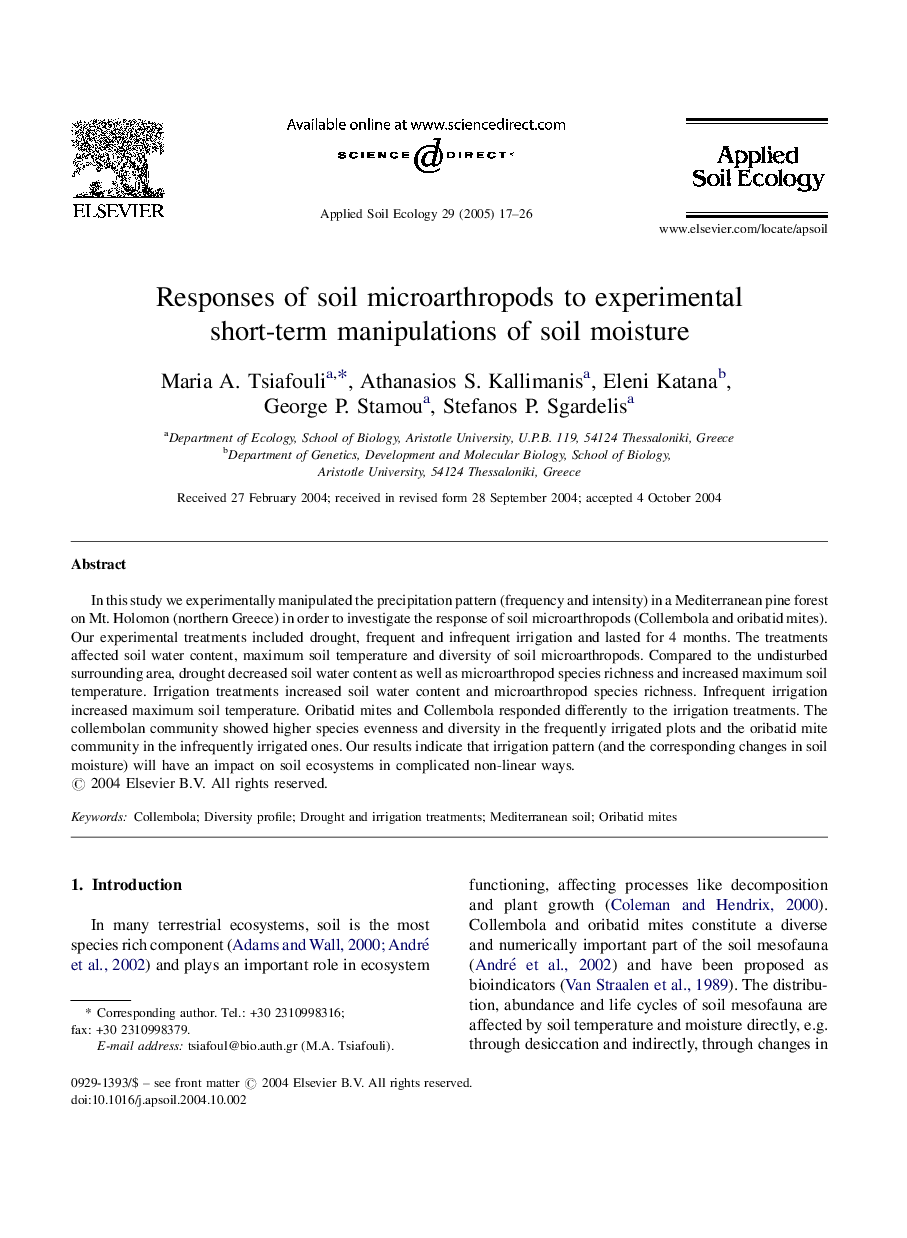| Article ID | Journal | Published Year | Pages | File Type |
|---|---|---|---|---|
| 9445260 | Applied Soil Ecology | 2005 | 10 Pages |
Abstract
In this study we experimentally manipulated the precipitation pattern (frequency and intensity) in a Mediterranean pine forest on Mt. Holomon (northern Greece) in order to investigate the response of soil microarthropods (Collembola and oribatid mites). Our experimental treatments included drought, frequent and infrequent irrigation and lasted for 4 months. The treatments affected soil water content, maximum soil temperature and diversity of soil microarthropods. Compared to the undisturbed surrounding area, drought decreased soil water content as well as microarthropod species richness and increased maximum soil temperature. Irrigation treatments increased soil water content and microarthropod species richness. Infrequent irrigation increased maximum soil temperature. Oribatid mites and Collembola responded differently to the irrigation treatments. The collembolan community showed higher species evenness and diversity in the frequently irrigated plots and the oribatid mite community in the infrequently irrigated ones. Our results indicate that irrigation pattern (and the corresponding changes in soil moisture) will have an impact on soil ecosystems in complicated non-linear ways.
Related Topics
Life Sciences
Agricultural and Biological Sciences
Ecology, Evolution, Behavior and Systematics
Authors
Maria A. Tsiafouli, Athanasios S. Kallimanis, Eleni Katana, George P. Stamou, Stefanos P. Sgardelis,
